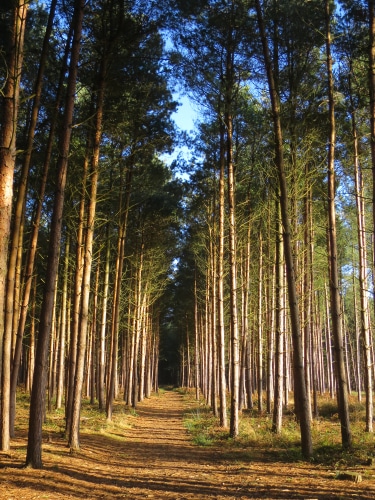One of the reasons I got into heritage is because I really love old buildings, everything from grand stately homes to castle ruins to terraced houses. I like features - pillars and porticos, chimneys and bricks, door bells and boot scrapers, the extravagant and lavish to the practical and functional. They all interest me and I’m fascinated by who and what they have been witness to over time.
One of the perks of my job is that I get to visit so many fabulous buildings and have a good nose around them - especially when I get to go through a ‘staff only’ door where often the most interesting features lie. Features that tell you – or even better, let you imagine about the people who lived there, their everyday lives, their successes and failures and how things were in days gone by.

So when I first started working on projects at Cannock Chase AONB in Staffordshire about four years ago, I wasn’t sure how I would get on with a landscape rather than a building. Cannock Chase is vast, 3000 acres of open heathland and forest and one of the largest country parks in England.
It is beautiful, there is no doubt, but on my first visit I was desperate to find the history. I saw lots of people enjoying the Chase: cycling, walking, out with their dogs, children playing in the park – and I wondered what in this landscape links me to the past and tells me the stories of those who have been here before us? I didn’t have to wait long. The Chase is full of reminders that something happened here, something big – and it is really exciting. As I looked around at the trees and long views, a picture was painted of the landscape as a huge military camp – constructed just months after war broke out in 1914. To try and imagine the thousands of wooden huts, training grounds, bakery, hospital, post office and mess rooms (a small town which around 500,000 soldiers passed through) is a hard ask but as we walked through the woods I saw remnants of ablution blocks, water tanks, train tracks and hut bases.
The further we walked, the more subtle yet obvious indications we saw, including (in the middle of nowhere) what seemed like a small apple orchard – most likely to have been where soldiers chucked their apple cores. Then just off a pathway, a long ditch about waist-high with an island in the centre – a practise trench for soldiers to learn to pass each other whilst making as little noise as possible, trialling and testing ideas before the real thing. With a bit of being pointed in the right direction and explanation I was able to imagine a little of camp life, what the people who lived and worked here would have being doing, how they were preparing for War and what their living accommodation was like. Vast, open, bleak in the winter and I should think very different from home.


With thanks to the Heritage Fund, four fantastic projects have been delivered by the Friends of Cannock Chase and have sensitively interpreted the Chase’s fascinating WW1 heritage without compromising the remains or the atmosphere of the landscape. A team of brilliant volunteers have been recruited and trained to deliver guided tours, talks and events. There is now a visitor guide which tells visitors more about the history and takes people on walks around the Chase where they can view key features. Volunteers have made contact with ancestors of those who trained or worked at the camps and shared those stories through exhibitions, events and online as well as through a school literacy programme. Young people from a local Youth Theatre made a play about soldiers on the camp which was performed locally which has now been made into a film.
So if you find yourself some time and want a new place to explore, go and take a look.http://www.cannock-chase.co.uk/ Choose to use the interpretation on offer or explore yourself, subtle features and remnants telling the story of one of the most important periods in our history are all there, you just have to look a bit harder and use a bit more imagination, but whilst walking and enjoying the beauty of the Chase I think that adds to the fun.
